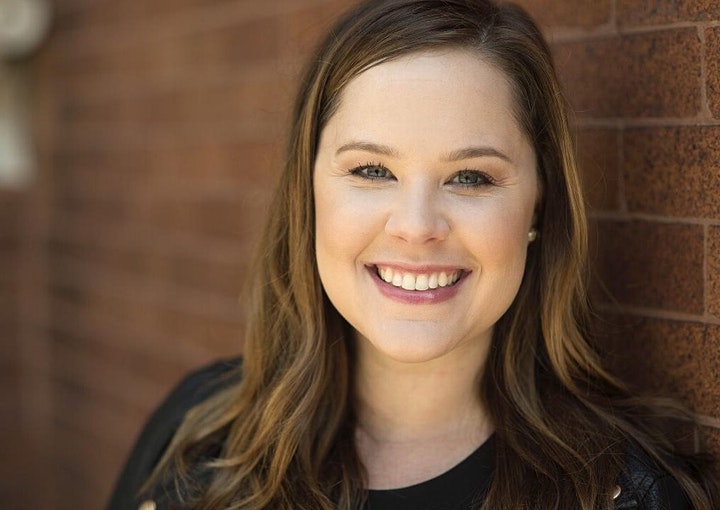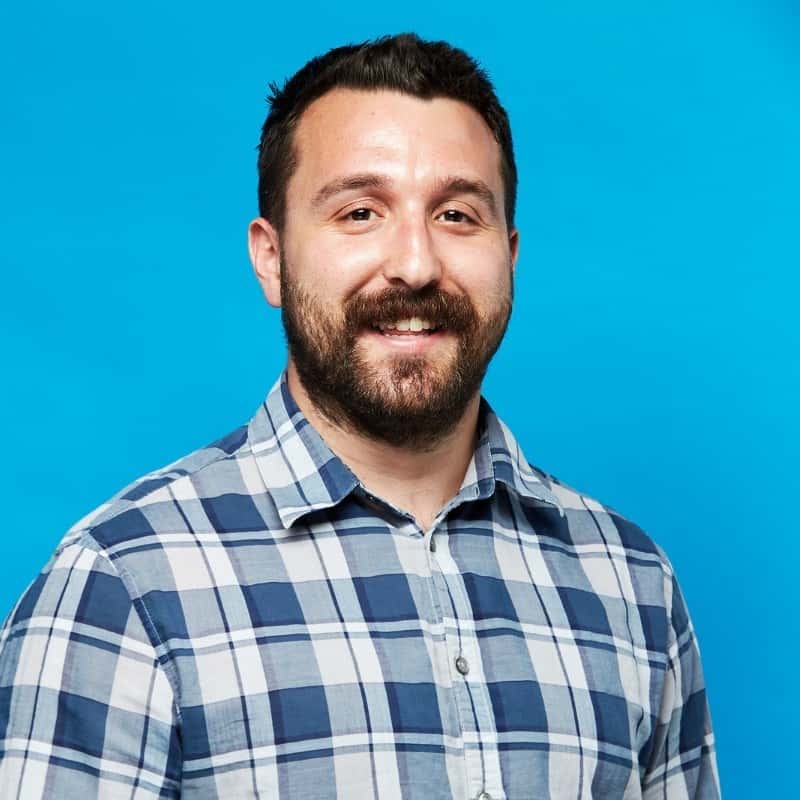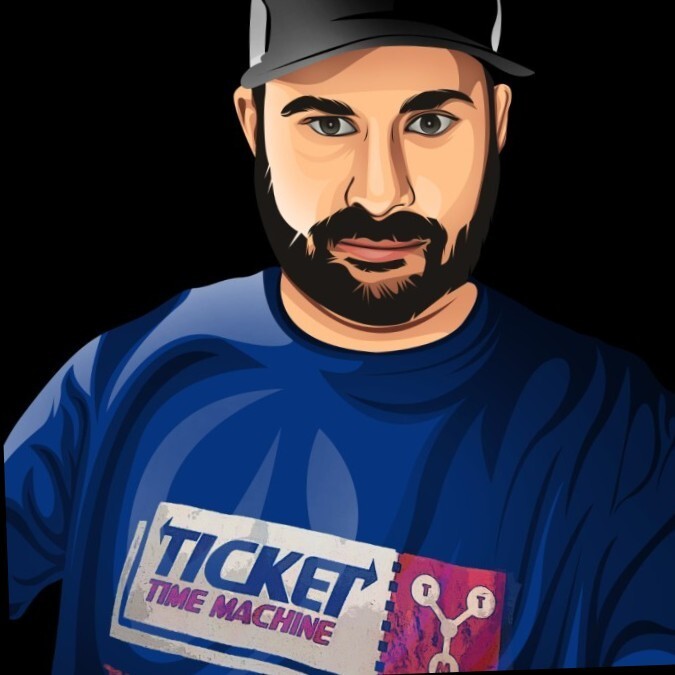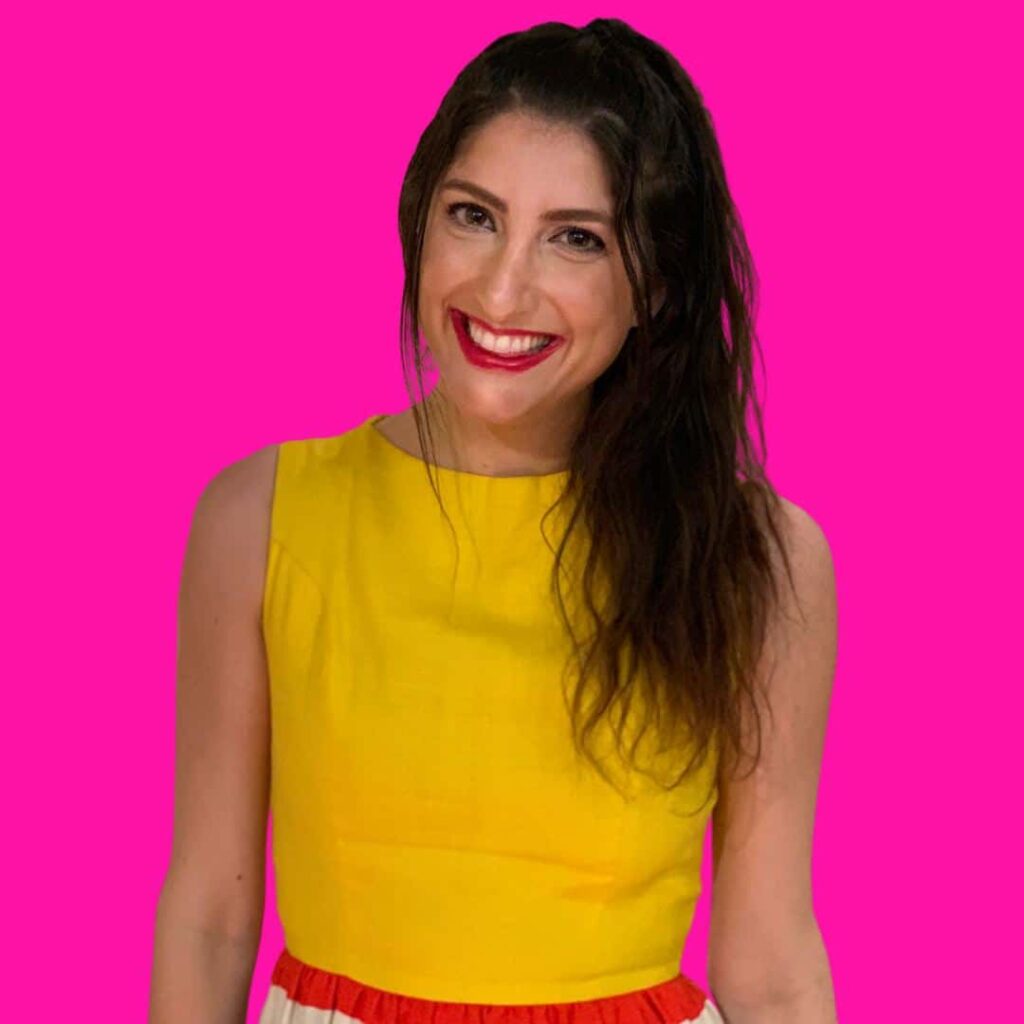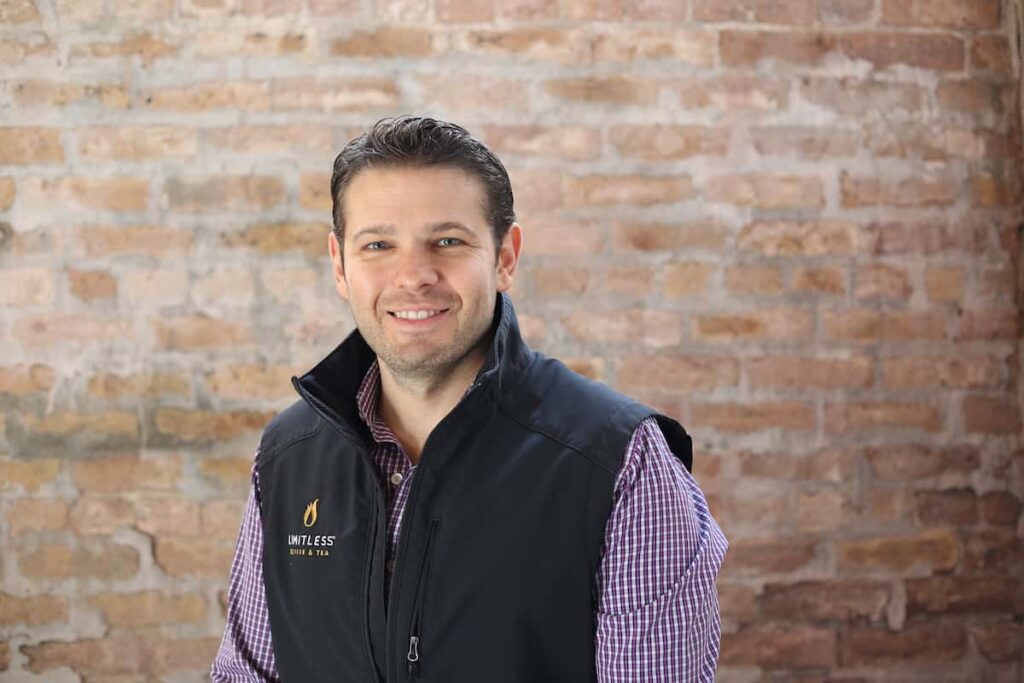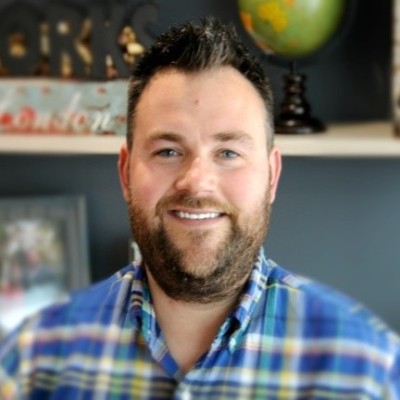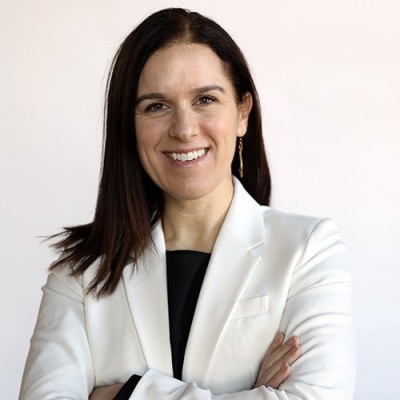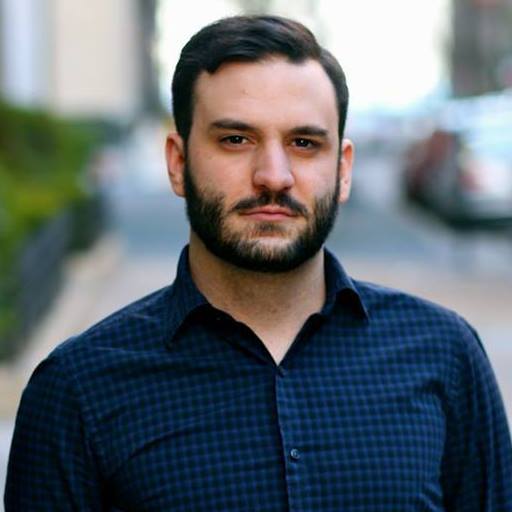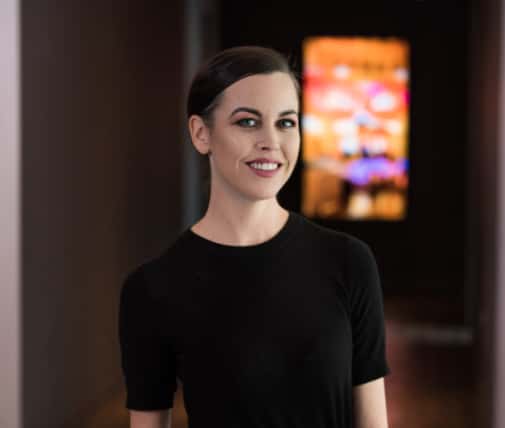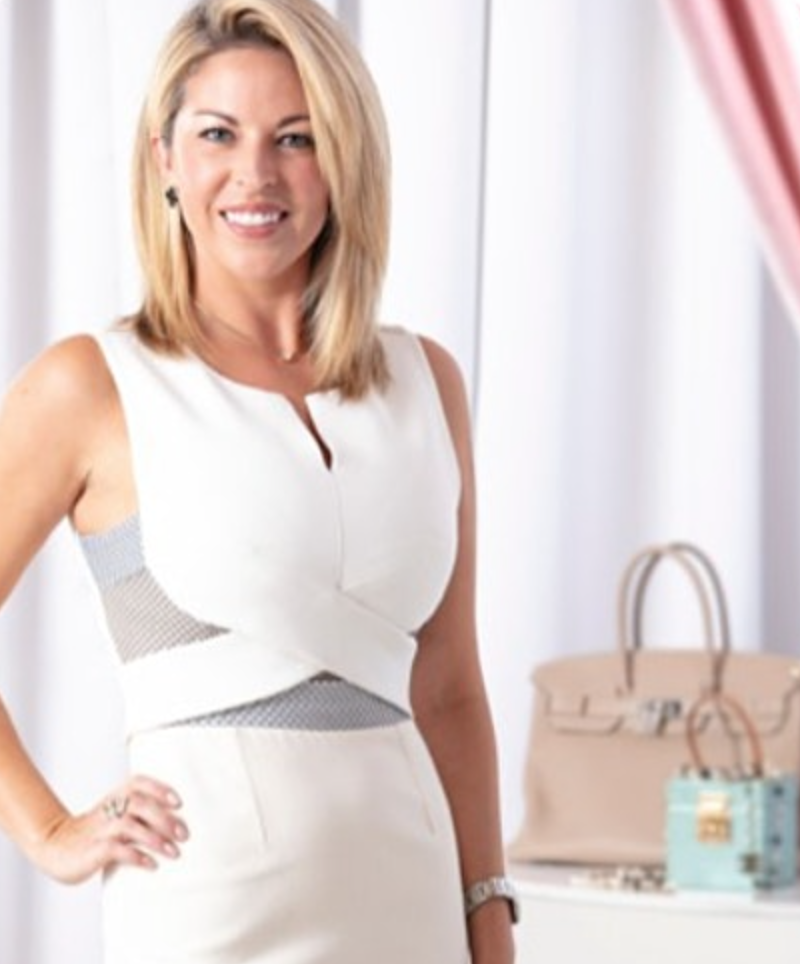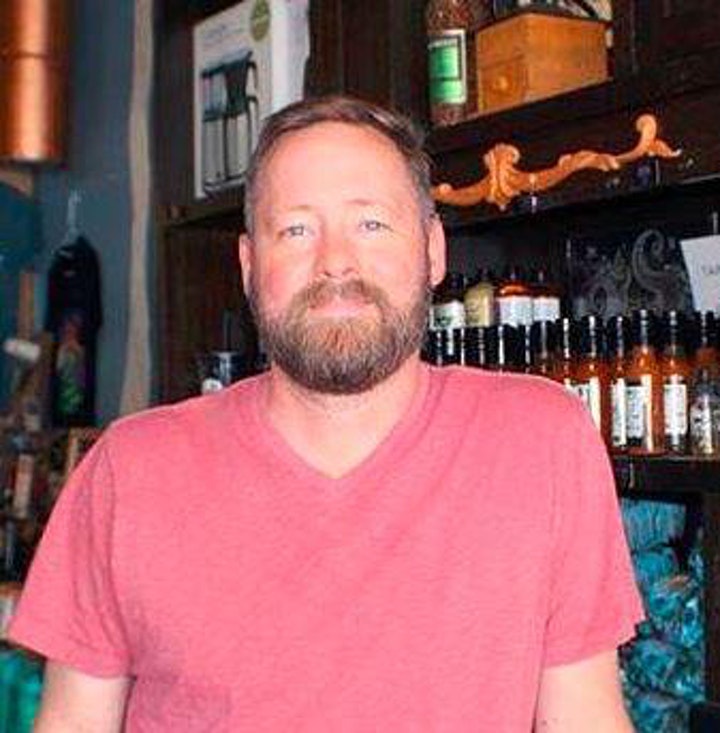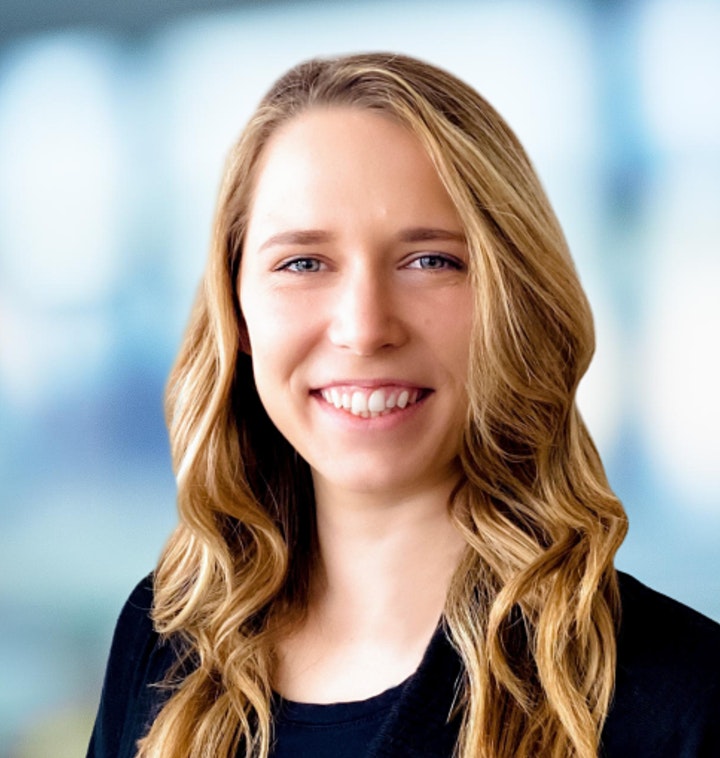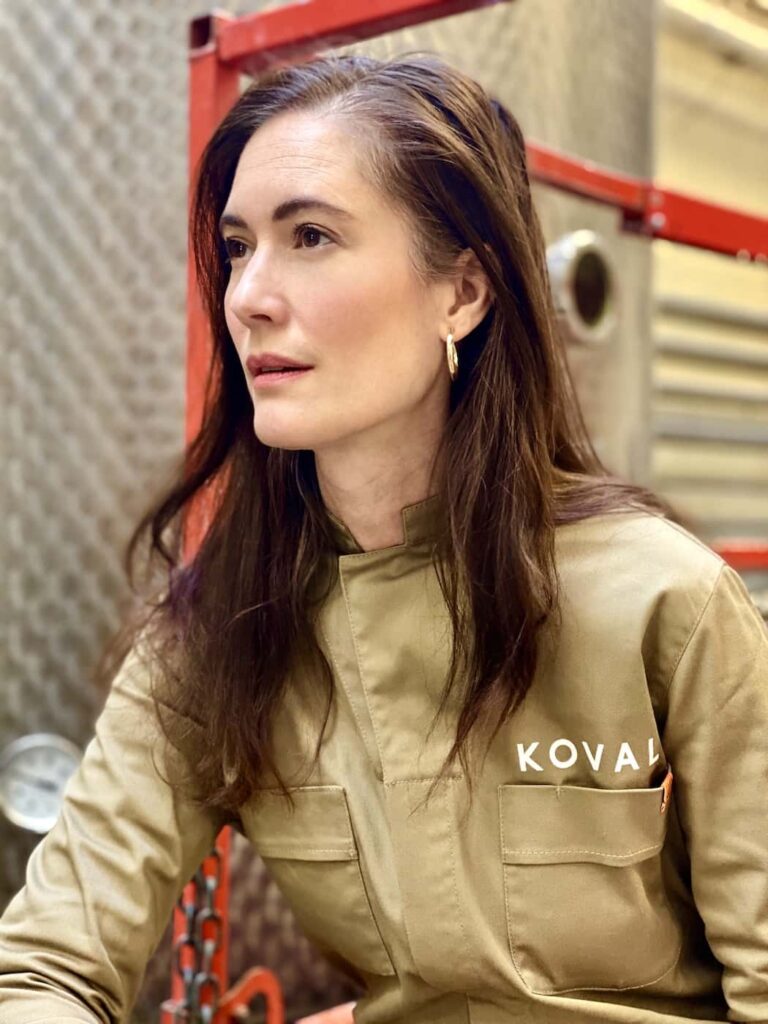Read The Transcript for “Convert Visitors into Customers with Khalid Saleh”
*Please note that transcription may not be exactly 1:1 to what was stated in the video.
The Art of Converting Visitors to Customers with Khalid Saleh | VisualFizz Growth Series
VisualFizz: Welcome Khalid! Please tell us your background and how you started Invesp.
Khalid Saleh: The company I’m with now, actually, my wife started it. I was a software architect in a different life and it started as something really small on the side and two years later, I still remember her. I was working on a project for ‘Go To Meeting, Go To Webinar,’ the competitor of Zoom. Zoom didn’t even exist at that point in time, but my wife knocks on my door and while I’m working on this project and she’s like, I think you should quit your job. And I’m like, quit my job? I mean, a stable salary, software architect. She’s like, I think I’m onto something over here. So, about half an hour later, I was on a call with my boss and I told him, Hi Bill, I think I’m just going to… And it’s funny because my parents were visiting at that point in time.
(00:46): So, I quit my job. I go downstairs, I sit with my parents. They’re like, how are you doing? How’s your day? I’m like, yes, I just quit my job. And they’re like, what happened to you? And I was like, well, we have this thing that we’re doing now, and I think my mom had a heart attack. She’s like, you have such a good job and a good salary and the rest is history. I always joke with her. I’m like, mom, remember that? She’s like, no, I don’t. I never said that. I’m like yes, you did. I thought it was crazy.
VisualFizz (01:13): So, there’s a lot of things that I just heard from that story, but just casually quitting your job. It reminds me of overnight successes that take years to build. It sounds like you may have had a plan in place before you took that jump, but is that the case? Or did you quit and then build?
Khalid Saleh (01:33): No. I wish we had a plan. So, I quit my job in March and we have money saved up, and then my wife thought that the business was a bit more stable compared to what the business was actually at, the stage that I was at. So, we survived until August and then I’m like, gosh, what have I done? There’s not enough business coming through. It’s not the same stable salary at the end of the month. You’re not getting a really nice paycheck. So, we scrambled for a little bit and somehow things tended to work themselves out throughout the years. Not something that I would advise anybody to do.
(02:15): But somehow, I remember sometimes at the end of the month, especially the early years on I’m like, man, are we going to be able to pay for the office rent? And we’ve had a couple of employees there, are we going to be able to pay for them? And somehow looking at it, we always had something new come up and business expanded. It of course helped that we were very early at the game, so not too many couples and conversion optimization a lot with competition.
VisualFizz (02:38): Yes, that was actually going to be a couple points that I just wrote down what we were talking about. In my past life, I started out freelancing, probably around 2011 when I was still kind of in college towards the end. And that’s when it was pretty new. There were contractors and people did offer this, but it wasn’t Upwork, it wasn’t freelancer.com. It wasn’t as huge as it is now. And definitely there’s not as many competitors in the space. There’s not as many people offering this exact niche. It is kind of in the same way where it tends to fall under marketing than anything else.
(03:11): Much the same way conversion rate optimization tends to fall under marketing and marketers have to be like, this is important. Please, can we focus on it? But it does fall under those umbrellas. So, I’m kind of curious about being in the conversion rate optimization business. You just started your business, you’re kicking things off. How do you generate the clients that you would actually serve? Obviously, that conversion rate process gets optimized, but I’d love to hear where you started.
Khalid Saleh (03:40): Gosh. It’s sort of interesting because initially it was just a couple of contacts here and there. And one thing that we’ve relied on in the early days, is just talking to our clients and until now, we’ve had clients since 2010 that refer business to us. So, I always say the secret to a good relationship, to a successful digital marketing project are two things. You have to deliver good results which the client can see because you can deliver the most amazing results, but if the client doesn’t see them, that’s useless. And then number two, you got to keep an amazing relationship. Good results, no relationship dies. Amazing relationship, but there’s no results, the client is going to say, why am I paying for this? So, you do those two things and the client keeps you around for a long, long time, but they’re also willing to refer business to you.
(04:34): So, that was how it was early on. One of the things that’s helped us tremendously. Our first blog post was August, 2006. So, we’ve been writing content about conversion optimization for years now. So, the website has very healthy traffic. We’re at a hundred thousand visitors a month. And then in the space, I think there’s only one other website that kind of does better in traffic than us. So, we’ve established ourselves in that area and we’re at a point where almost every day there’s two or three companies that reach out to us and say, we’re interested in doing conversion optimization. Can you guys help us out?
(05:12): So, I would say looking at when people ask me, I’m like, content is good. I don’t know if additional marketing agencies are doing this… Let’s say they want to do something right now, I don’t know if content would work as well for them because you’re competing against very well established brands. It’s the start of the quarter, and I sit with our marketing team and I say, okay, well, here are the keywords that we want to rank for. We have those five or six terms that we’re going after. And I know if we publish enough concepts by the end of the quarter, we’ll be on the first page, probably one of the top three or five results.
VisualFizz (05:47): Sorry to interrupt you. Are you talking about written blog content?
Khalid Saleh (05:52): Written blog content. Because again, when you have a domain with 200,000 backlinks, we structured it a little bit. We have enough context, we can push our domain. But let’s say for some additional agency owners to start up, it’s tough. Now, if you’re doing something local, you can actually compete, then you can still rank. And if I’m focused on something and being in Philadelphia or something like that, you can do really amazingly well there.
VisualFizz (06:18): Yes. I mean, definitely content is key. Content is king. Content covers a lot of different bases. Obviously, if we’re just talking about written blog content, it can be really tough to rank against… If you’re a DIY company and you want to rank against Home Depot, that’s going to be very, very tough if you’re just starting out. But if you are a DIY company and you’re trying to rank against competitors right in your size, right where it fits, then creating content that fits that audience and brings value is important. So, the diversification of content is something that we emphasize on. There’s blog content, and then there’s video content. And then there’s images and then there’s interviews. And then there’s all of these different things and they all fall under content.
(07:00): Something else that I definitely wanted to call out and bring up, we talk about content, we talk about content writing. We talk about content writing for growth. But this means in terms of content writing, what is content is expertise. You are taking expertise from your brain and you’re putting it onto something, a piece of paper, a video, whatever it is. You’re proving to the world that you know what you’re talking about. So, that’s kind of a pretty key element that might fall between the cracks, I feel. In the growth process, create content. Now you use it to share your expertise in whatever it is that you know.
Khalid Saleh (07:36): Yes. And I also think another thing is that lots of marketers continue emphasizing content marketing as a way. And I believe for us, it’s been our business from when we’re just starting out and to being fairly successful. But I also think lots of marketers when they talk about content marketing, they talk about content creation. You can write blog posts, you can create videos, you can do podcasts, but if you cannot figure out a way to have eyeballs to see through that content piece, if you don’t have an actual content distribution plan, well, your content is going to sit there. You might be under the mercy of Google and Google changes the algorithm and one day you’re doing really well and other days you’re not doing so well.
(08:25): So, I always ask our team, what’s our distribution plan? You wrote a blog post for us that could be 4,000/5,000 words. It takes us almost a week to create and research and make sure that we’re interviewing lots of people. So, you could just put 40 to 60 hours into creating a blog post. How do we make sure, I mean, we have our email list, but how do we make sure that more and more people are seeing it? What is the distribution plan? Because that’s important. And then what’s the goal from the content pieces? Is it top of the funnel, mid funnel, bottom of the funnel? How do we actually make sure that this gets to the right audience at the right stage? And what’s the action that we’re expecting them to take from it?
VisualFizz (09:04): Everything that you just highlighted is basically the process. Maybe, correct me if I’m wrong and I’m sure you will, if that’s the process for conversion rate optimization. Can you create pieces of content directly for that audience? You’d get it in the eyes of the people that care about it, and then you learn from what happens. So, I mean exactly what you highlighted for content. We can apply that to conversion rate optimization. We’re definitely talking about growth on the growth series and content really is the footstep to climb that ladder.
(09:37): So, I think it absolutely makes sense that if you guys started blog writing in 2006 and you’ve been sharing your expertise ever since, you’ve built up a brand around that reputation. You’ve given the audience, yes, I know what I’m talking about. Here’s the proof of it. Here’s all of the proof of all of the supporting things as well. It really is creating a brand around the expertise.
Khalid Saleh (09:58): Definitely. It’s sort of interesting as we go through these exercises, usually with the internal team of creating content and one of the things that hit us a while back, that’s if you ask digital marketers and people, especially in this space, how can I find out a good course on conversion rate optimization? How do I find out, how do I calculate what statistics signing to use when I’m doing it? They’ll point out our content. But I told them, this is great. I’m not complaining. However, my end customer, the company that works with us, is typically a VP of e-commerce or a CEO of that company. I don’t think he’s searching for AB testing statistics. They’re not interested in that.
(10:43): So, I always tell them, it’s fine. We want the best marketers to read our content, but we also have to create that content that appeals to our target audience. And when we did that shift where we’re still doing a mix between here’s the how to lengthy blog posts, but we’re also doing content that’s targeted towards the right audience. The audience that actually ends up hiring us, that also helped us really. We saw a shift in the number of leads that are coming to us and companies that want to talk with us.
VisualFizz (11:13): Absolutely. That shift in thinking really does change the content that you bring to the table too. You’re not just trying to put words together onto a page, if you’re actually trying to speak to somebody and get them to take an accent or prove the value of what you’re offering and that changes the content, you’re writing much less about just creating it for the sake of it and much more to put it to work. So, a couple of questions that come to mind. What are some of your favorite distribution channels for the content strategies that you’ve put into place? I know that’s a big question.
Khalid Saleh (11:48): No, it depends on the piece of content. But for us, because again, we’re a B2B, so we’re talking about audiences again, CML is a VPs of marketing. So, LinkedIn does really well for us. And it’s funny because I tell people I’ve been on LinkedIn since 2007, but I’ve been on LinkedIn only since 2020, January of 2020. For a long time I’ve been on LinkedIn and just on the car. So, you post something and it feels like you’re shouting into the void or you’re going to a skyscraper. You just open a window in a big skyscraper, you shout something, no one hears you, and it’s like, nothing happened. I asked my wife, could you like my post? She liked it. It feels sad and lonely. I think 2020 is when we took LinkedIn very seriously and truly it helped push us further. Social media in general whether it’s Facebook, whether it’s Twitter. Now, I’m going out on a mission to figure out Twitter, and I think I have most of it figured out. So, we’ll see. We should talk in six months to see if I also managed to crack that nut.
VisualFizz (12:58): We should run that as an AB test.
Khalid Saleh (13:03): I think most of the time when people use social media, that’s the problem with content distribution. What did they do? I’ve written an article, I have an infographic, I have a video. And what do they do? They take it, they throw the link on Facebook. They go to all the Facebook groups, they throw a link on their feed. Well guess what? Somebody on Facebook, somebody on LinkedIn, they’re just not interested in clicking on the link. I mean, there are a few people who would click, they probably know you, they’re your friends. But if you’re targeting an audience, social media and how to use contents, blog posts, how do I actually distribute it on social media? So, usually for example, we will take bits and pieces of that article that we find interesting and we use them as posts on LinkedIn.
(13:43): Then we’ll say, in the comments, this is a full article about this. So, it’s not the full article that you’re just throwing there. It’s not the link to the article, but rather the small pieces that you include that you know will actually intrigue people. Because that’s the other thing it’s like, this is an amazing article. Okay, can you pick four or five interesting points from it? Have a really good hook where people are going to say, I’d like to read more. Have them read a little bit more and then they’ll say, you know what? Where’s the full article? So, we see that it works really well for us.
VisualFizz (14:14): Yes. I mean, I definitely love the different levels of user engagement that you’re creating. The person can read your quick post and move on. The person can dig for more information if they’d like it. And then that person can visit that link if they’d like. You’re leaving everything available for the users without excluding everyone. I love it. And I do think that using social media to distribute content, to get people to actually visit your website, that can be effective too. But it changes the game when the goal is to bring value right there. What we might ask ourselves, what value can I bring to the user? How can my brand be present without asking the user to do anything else other than just what they’re doing, just kind of scrolling through reading content.
(14:59): Linkedin is especially qualifying because usually when users are on LinkedIn, they’re there for business. I don’t think I’ve ever purchased anything from LinkedIn the same way that you do other channels. And it’s just the nature of the beast. So, in a way, LinkedIn users are definitely pre-qualified to have that professional conversation to talk about this stuff like they’re ready. And that definitely speaks to why the conversations tend to work better on that channel. I would be interested to hear your experience on Twitter. I love Twitter personally. I love marketing. Twitter is a whole little community.
(15:33): I’ve been on the PPC chat community of Twitter really, really early on in my career. And it helped me feel kind of not in a bubble so much, especially in agency life. It feels like everything that’s happening to you is super your fault and if you don’t know something, that’s also your fault too. So, to have a community out there that shares information and just helps you learn and grow as a professional, it’s there for support. I’m sure everything on LinkedIn can be exactly the same. We’re centering around the drain on creating valuable conversations on social media and then your content is there when it’s time to have it be present, to have that conversation around the content.
Khalid Saleh (16:17): And I think by the way, a point that you said, it’s really at the heart of this. Lots of times when people go to social media channels they’re thinking, how can I get people to my website? It’s very self-centered. It’s sort of funny because as marketers, we always talk about focus on the customer, focus on the customer, focus on the customer. I think we’ve repeated that phrase so much that it almost became meaningless. But then when you see how marketers approach social media, they’re thinking about how I can drive more traffic to my website? If you put that aside completely and don’t worry about that, and you focus on providing value, which I know, sounds generic and I hate sometimes you say something and you’re like I can’t believe it just said that. But it is what it is.
(17:00): That’s the best expression that I have. People will find you. So, a really good example of this is a friend Harry’s marketing samples. The guy started marketing examples a year and a half ago. And he was a developer. He grew an email list and it’s very impressive. He grew an email list to about 55,000, I think, and it’s funny because what he does is examples of marketing very short, sweet, he does it on Twitter and LinkedIn. He distributes his content really well. But here’s something interesting about him. He never actually puts a link to the original article. Never does. But people are so fascinated by this content that they actually find the website and are subscribed to the website. And I’m thinking to myself, I can’t do that.
VisualFizz (17:53): It’s a disconnect.
Khalid Saleh (17:57): Yes. Trust the process. He’s like, you put down good content consistently. People will find the website. He has 55,000 email subscribers in a year and a half. I joke about that. I’m like, God, man, it took us 10, 15 years to build 30,000 people on our email list. That’s very impressive though.
VisualFizz (18:16): I mean, there are a couple of reasons why I’m not saying it’s easy to build an email list at all. It’s never easy, especially one that cares about what you’re reading. But the marketing example is general enough that this applies to so many users. Everybody in this general industry would be interested in this. We don’t have to get too specific or too niche with anything. It serves a purpose and then we move on to the next thing. I am definitely going to check out marketing examples. I follow a couple other email lists where there’s one that I love. It’s an AB test and then you guess which one ended up in more sales. I forgot the exact chain. I know that there is a woman named Debra involved that pushes these out. And I feel very bad that I don’t have her last name here, but they’re awesome.
(19:04): It really speaks to the initial idea of what we think as marketers is going to work. And it’s so funny how many times the only thing you can consistently rely on in marketing is that everything will change all the time. So, we always have to be testing and we always have to be thinking about the different user processes and where that goes to result in that stronger conversion. Those mailing lists are awesome. They also allow us as marketers to jump in really quickly, pay attention to this for a second and then move on to our day. And in a way, maybe we could use that as a jumping off point.
(19:37): As we mentioned, conversion rate optimization nowadays, it’s its own thing. It’s its own service. It’s its own business, obviously that you can offer. But it really is centered around improving sales from the web, wherever conversions come from and optimizing that process. It’s about taking all of the different things together and optimizing them for that sale. So, I’d be curious what some of your favorite pieces of advice when we start that process involve. Obviously, conversion rate optimization needs to be relevant to the website at hand. No two websites are going to be the same. Small things are going to differ for each business, but I’m sure there are key takeaways that we can keep in mind when we’re trying to optimize any website or any funnel.
Khalid Saleh (20:22): So, sort of interesting. I always say, if I want to simplify conversion rate optimization the way I think about it at the very high level, you look at the website and you’re looking for two things. You’re looking for areas where the website is broken, whatever that means. We’ll just leave it vague enough to say the website is broken. And then areas where the website is functioning correctly, but can look for additional revenue streams. Usually when you do this analysis and you can use different methods, you come up with a humongous list of things. Sometimes a hundred items that can be fixed, or it could be added to the website, or it can be improved. You prioritize those and you say, here’s a problem. Based on my prioritization, I think this problem really will have the most impact on the bottom line.
(21:09): This problem is dollars in the bank. You figure that out, the next thing you do is you say, okay, well, okay, so I’ve identified a problem over here. And I’m going to create a new design, maybe a new flow in the website, maybe a new copy, could be anything correct to fix the issue. You create the best solution that you can think of, and then ultimately you do what we call AB testing. So, your website is getting a hundred thousand visitors and you think that maybe your brand positioning or your messaging on the homepage is not very strong. Well, here’s a better brand positioning. I was talking to a company this morning. They sell these products where you basically subscribe as an e-commerce subscription business for kids between ages five and 10. You subscribe and then your son or your daughter starts getting these basically the weekly mail with games that they can play on paper and whatnot.
(22:07): So, I was joking with him because he’s like, he’s struggling with his conversion rates. This is a half a percent and he’s like, surely we can do better. I’m like, you can do better, but here’s something. I have a five-year-old and I have a ten-year-old. I looked at your website, he contacted us a couple of days ago, I looked at his website for two days and I could not figure out what he does. I’m like, for the life of me and I’m your target audience. All I see is like, it’s perfect for kids ages five to ten. I’m like, I knew it had something to do with my kids, but I could not figure it out. Granted it’s a new concept, so I was not sure what it is. But I’m not sure. Because it took him about 30 seconds to explain it to me and I’m like, wow, this is really cool. I should all subscribe to your service.
(22:48): So, ultimately you come up with a solution, you have your visitors, a hundred thousand, you split them between the old design, the new design 50,000 visitors will see the old design and 50,000 visitors will see the new design, and you’ll let your visitors be the judge. Your visitors are going to tell you which design works better. How did they tell you? By the number of orders, by the number of subscriptions, by the number of contacts. It depends on the website. But how many conversions each design generates? So, fundamentally, figure out the issues, come up with a solution, test it out and let people be the judge. I always joke that I’ve been humbled way too many times where I think to myself, this design is absolutely amazing. This design is going to kill it and people think otherwise.
(23:32): So, we’ve done 23,000 AB tests until now, a ton of AB tests. And we’re very proud, I think, of our success rates. So, our success rate hovers around 48 to 49%. So, about half of the AB tests that we run are successful. And we’re always counting that success, like having more AB tests. So, we’re working with a company, a large $1.5 million company, and I’m thinking to myself, I’m lucky to know when you work with a big company like that, you give them even a 5% lift that’s just absolutely incredible. So, I was looking at the results today and we’ve been working with them now for about four months. So, we’ve done close to 22 AB tests with them in the past four months. And our success rate is at 20% and I’m like, what’s happening guys? They’re like, you know what? They’ve got all the basics that we can hit covered.
(24:30): Still I believe you’re talking about a successful AB test for them. I think those four successful AB tests were a few million dollars because we can’t go into how much, but nonetheless, it would have been really nice if 50% of the test generated lifts. So, that’s at a very high level when we talk about improving conversion rates. Tactically there are certain things that you do. And I always say, there’s certain things you have to get out of the way before you start thinking about well I need to climb to really tremendously increase my conversion rates. One thing is the website needs to be bug free and then people laugh sometimes. And I think you’ll be amazed.
(25:13): So, my mother-in-law tried to use PayPal yesterday. She’s an older lady and she doesn’t know how to use it on her phone. So, she called my wife and she forgot her username, she forgot the password. I actually know the Paypal team as an investor. I know them rather well, and I know how much testing they do. But it’s funny that the amount of struggle, I mean, at the end, after awhile I’m sitting there on the phone and my wife is talking and our 45 minutes into it. Then I’m like, you know what? Hold on, hold on, we’re doing this wrong. She had signed up for PayPal using her phone number, just use a new sign up and you figure out the password and then tell it to her. She’s like, I should’ve done this instead of trying to get back to her on the phone.
(26:00): Because silly small bugs that you don’t think about because you’re used to your website, and you don’t notice the issues in it. So, you want to get all the bugs out of the way. Something else is you want to get mobility out of the way. And it’s funny when in 2021 everybody says they are mobile first and I always joke about that. When a designer tells me I’m mobile first and I’m like, show me your designs. What’s the first thing that they show me? Their desktop designs. I’m like, I thought you’re mobile first. Mobile first means you design a mobile first, really it does mean that, and then you do the desktop. Most of our clients get 70%, 80% of their traffic on mobile.
(26:44): So, I’m like, okay, let’s design a mobile. So, make sure that the mobile experience is thinking about the visitor’s mindset. It’s actually smooth and it’s easy for people to do whatever they need to do. The third thing, you’ve figured out the bugs and the mobility. So, this is kind of the bottom of the permit if you want to think of it that way. The second level is usability issues and usability is silly things. You’re pressing on a button, you expect something to happen and it’s not happening. You’re pressing on a button and you’re not sure if the website is doing something or it’s not, you’re just sitting there. You’re like, should I press again? Should I?
VisualFizz (27:23): You’re scrolling and nothing’s happening.
Khalid Saleh (27:24): Exactly. So, there are so many usability principles that have been written about since the eighties, even pre-internet. So, you want to make sure that the website is really user-friendly. And then at the top level, you want to think about conversion and persuasion. How do I actually persuade people to convert? Now, lots of times people confuse usability with persuasion and I tell them those two different things. So, a user-friendly website, when the visitors come to it and they’re navigating through it, they’re thinking to themselves, I can buy from here. Versus a website that’s optimized for persuasion. The visitors think to themselves, I have to buy this. I have to get this. That shift in the mindset of your visitor is absolutely tremendous and it’s difficult to achieve. And that shift is when you go from a 2% conversion rate to a 4% or 8% conversion rate, just complete transformation for a business.
VisualFizz (28:24): My gosh, I love everything that we cover. It’s kind of funny how closely related SEO or even design is related to what we’re talking about. They’re all very sematic. The Venn diagram overlaps quite a bit, especially for a number of reasons. The first that comes to mind is making sure that there’s no bugs. The story that you bring up hits extra home for me because my mother’s favorite device is her iPad. She does not have a desktop. And of course, the iPad is not really quite as supported in terms of design, but there are still users on it. And there are still people trying to figure this out.
(29:04): So, I will say that one of the things that I have discovered, and this could be totally personal, but it might simply be applicable when it comes to PayPal and their usability studies, you are still very, very reliant on the user just to put it bluntly, read the prompts that are in front of them, just to do this and X will happen. And then the user doesn’t read that prompt. So, they’re relying on the experience more than the detailed instruction that’s literally in front of them. And that in itself kind of speaks to usability versus functionality. Yes, function means that this instruction is in front of you and you follow it if you’d like.
(30:00): Usability is, do we make it easy for you to follow it? What’s the likelihood that you’re actually going to do these things exactly? And PayPal is such a good example because there are key things that you do, you just need to read the prompt. It’s a 30 word prompt, but it does give you a set of instructions and if you don’t read it, certain usability features won’t make sense. So, I do think that that’s definitely a challenge that PayPal has got a struggle with. All the different devices and all the different users coming together, but user error and usability are much less about logic and much more about opening the path for the user to get to what you want them to do.
Khalid Saleh (30:41): Definitely. This is sort of funny. So, yesterday I got this email and basically, I have to sign up the kids for the soccer program, the youth program. The deadline was yesterday. I’m like, okay, I’m going to do it. So, then I’m sitting upstairs and my laptop is downstairs. I’m like, I can do this on my mobile phone. Granted, it’s an association that is free and they have on my phone, a whole bunch of PDFs that I’m supposed to read through, which they could have literally, probably bought my house and I didn’t know. I was just signing. But I reached the end after so many pages filling up and every time it gives me an error I have to go back and look. Wanting to click here, I need to sign my name here. Then I reached the end. There’s two buttons.
(31:26): So, I go to the big button and I click on it, and it’s like I’ve canceled the application. I’m like, I didn’t cancel the application. I’ve just the last 10 minutes and I mentioned the kids. So, I ran through it, I reached the last point and I’m like, I need to be careful. And it turns out the way that they design it, it’s like there’s a button for save, there’s a button for cancel, which they decided to make really large, that’s kind of the largest button. And on the phone, I couldn’t see it. But on the right most side, in the right lower corner is the submit. But then I’m like, I didn’t see that. So, I know next time I will be careful. So, silly things like that, but imagine the amount of frustrations and if I didn’t have my wife saying, did you do it? Did you do it? Did you do it? I probably would have said, you know what? I don’t need to deal with this.
VisualFizz (32:13): Exactly. And that brings us back to what we’re doing here. We’re doing this for business and other businesses are trying to do this too. So, you trying to use the website and not being able to, even though we all thought it would work out, that affects sales. That affects you as a customer. You’re frustrated as the individuals and now you’re attaching that frustration to this brand. And small, tiny things that usability tests, but QA testing really is what it is, as you’re going through. And they’re vital just to know what that user experience is when they’re trying to complete the action that you’re asking them to take. So, yes, I mean, it’s definitely critical.
Khalid Saleh (32:55): Yes. So, think about this. We talked about the group of bugs and the usability issues, but then I’ll give an example from an AB test that we’re about to launch. Big furniture retailers and I mean, everybody wants to order furniture because everybody has been stuck at home. The shipping time for an item to leave the warehouse is anywhere between three to five days. So, that’s the standard. They have that on all their products. Well, it turns out that based on the warehouse and when the customer’s ordering, sometimes the shipping time for the item to arrive could be anywhere between one to three days. And we’re like, listen, this would actually be an interesting test to see.
(33:37): Instead of having the standard three to five days, how about one to three days for certain items? Let’s test that now the technology to implement something like that is a bit hard, but here, you’re not necessarily removing a bug, but you’re just making it easier for people. Because everybody’s looking for that instant gratification. And I’m going to have to wait for three to five days to look for this to ship versus it can actually ship out today in the afternoon or tomorrow and it makes a huge difference. So, it will be interesting to see the impact of that on the bottom line for that particular e-commerce website.
VisualFizz (34:08): Yes. And it’s kind of interesting because it’s almost like the user is used to Amazon level delivery. So, now other businesses in order to compete, that preference has become so common to us. We’re like, well, why can’t I have it now, immediately? Why isn’t a drone delivering my thing to my door? And it’s because Amazon has normalized that. Now other brands have to try and fold that concept and it’s wild.
Khalid Saleh (34:34): I think that’s what’s amazing about Amazon Prime. How long has it been now? We’re looking at probably 12, 13, years since?
VisualFizz (34:43): A while. More than 10.
Khalid Saleh (34:46): Yes. But the concept is very simple and it satisfies what people want. Deliver the item really quickly and I’m going to make you actually pay for it annually. So, we are paying for it. And not only that, we’re actually more committed to the brand by having Amazon Prime. And we’re going to try and have the best prices that we can, not all the time, but it’s something that humans are always looking for.
(35:11): We want some things really quickly and we want them cheap. Very simple genius idea. Two thirds of us households have an Amazon Prime subscription. The conversion rates… And this is absolutely amazing. So, Amazon’s website conversion rate pre Prime was about 18%. 14% to 18% give or take, it depends on the season. Prime, let’s take a wild guess. Let’s see. What do you think the conversion rate for prime members is about? It’s about 18%.
VisualFizz (35:46): Yes, my initial judgment would be just to double it. If it’s at 20%, let’s make it 40, but given that prime users are committed and they’re ready, I guess I would say maybe 50 or 60.
Khalid Saleh (35:58): It’s about 71%.
VisualFizz (35:58): Wow.
Khalid Saleh (36:02): It’s just the minute I see that I’m like, my God, this is absolutely genius to have such an amazing product where people are just basically buying constantly from you. It’s very simple, but it also goes back in front of their principles of psychology. When you introduce a new feature, people are fascinated by it. But then there’s something that we call the Keno effect. We get used to things. What was absolutely amazing a year ago, you get used to, and it’s a cost, not absolutely amazing. As a matter of fact, this is what I expect nowadays. So, we opened an office in Turkey and I’m not Turkish. People assume you open an office in Turkey, I’m like, I don’t speak a word of Turkish. I’m not Turkish.
(36:43): But we had some clients in the middle east. We have some clients in Japan and Turkey. And over there, which was really absolutely amazing, you order an item and you get it the same day. You get it in two or three hours. That’s a whole other level of expectations. Because with Amazon, and of course the US is much larger, but you order something and I’m like, I did not expect that. The first time it arrived was in two hours. I’m like, that’s nice. I just ordered this and it’s here. It’s just even nicer and it makes you feel really lazy because you don’t go. And everything’s free shipping. You don’t have to pay a membership or anything like that. I’m like, this is really good. But again, humans get used to things then because of Amazon and what they’ve done, they got used to it. I want my autumn and I want it really quickly and deliver it to me.
(37:29): That’s a tough time for retailers competing with Amazon. We work with Target and Target competes with Amazon and gosh, always trying to figure out what to do. But I think when you compete it’s sort of funny when you’re a real giant. They’re competing as giants, that’s one battle. When you’re a small brand and you’re competing against giants is a completely different battle. Because yes, they have the money and they have the resources, but there’s one thing that you have that they don’t have. You have the flexibility of being able to change things and make silly mistakes and no one would notice. Versus if Amazon makes a mistake, everybody’s going to be talking about it.
VisualFizz (38:05): Truth. I mean, there’s a lot of publicity involved in being Amazon and being on the forefront. But you definitely speak to one of the reasons why conversion rate optimization tends to fall on the back burner for us. Clients are nervous to test out new things. What if it doesn’t work? What if we have 20% success rates instead of the 50% that we’re used to? And that’s why we’re here. That’s why we’re testing. That’s why we’re getting through this conversion rate right now is where it is. And the goal of even failed paths, even experiments that don’t turn out the way that we want them, no tests really fail. Because we’re constantly learning anyway. But if something doesn’t go the way that we want it to, it’s going to help that long-term conversion rate.
VisualFizz (38:48): I mean, we’ve definitely touched on a lot of different things. I could personally talk about the concept of businesses and websites being functional, usable, and persuasive for hours. But we are getting a little close to time. To kind of bring things right back, maybe we can just kind of quick fire, a couple of pieces of advice that we could share with the audience here today. In terms of what you use to AB test and optimize, there’s obviously softwares out there. Obviously you can use your own brain to map out your processes and walk through it. At the agency, we like to use Google Optimize because it can tie into tag manager and analytics and all of that kind of fun stuff for us. But I’d be curious what kind of tools you have in your toolbox for something like this. Obviously there’s going to be industry specific ones, but there might be other ones that non CRO pros can use as well.
Khalid Saleh (39:39): Definitely. So, Google Optimize, if somebody is just starting out. I highly recommend it. It’s free, it’s available, integrates with Google analytics, so you have the data there. So, it’s just there and it’s definitely capturing more and more of the markets. Now, as people get a bit more serious about testing, there’s about 30 different software AB testing platforms that are available. We have our own platform, which our clients use is called Figpii. We’ve had it since 2011 or 2012. So, that’s really why the larger companies, eBays and Targets , end up using something like that. And that I think about it offers heat maps, session, recording polling.
(40:13): Some of the other tools that are really good also in AB testing are Optimized Lead, definitely a leader in the space, but they are also a leader when it comes to price. So, you’re spending probably at least annually, if not more. I like VWO. I’ve known by the way, optimizing Wentz was an agency before they became optimized. It’s funny. So, they used to be an agency. This is just very funny because of the Magento agency, by the way. And they would go to the Magento conferences and then they would build the product. So, somebody a few years ago, he’s like, there was this agency. I don’t know what happened to them. I’m like, man, you’re so disconnected and not having another agency. They’re the largest AB testing platform. He’s like, really? I’m like, yes.
VisualFizz (40:13): You’re just under a rock I guess.
Khalid Saleh (41:21): VWO is a really good platform. We’ve used VWO since it was in beta as well. We like the guys over there. Otherwise there’s a ton of other other platforms, but those are kind of like the pop-up platforms that you would know here.
VisualFizz (41:40): Absolutely. I’ve used Optimizely for a long time. I think since 2013 even, back when they were a little smaller and they were kind of an option to poke around with. Optimizing is a big one. If you have made your own tools, this is something that kind of personally interests me because I definitely have a lot of tools in my SEO and marketing toolbox, and all of them do slightly different things. It would be really great if they all did the one thing exactly how I would like them to be done, which is kind of exactly what it sounds like, what you have built does. So, I’d be curious how Figpii would do that? FIG PIE for everybody to search Figpii. Yes, I’d be really interested to hear what that brings to the table that is different from what Optimizely, or even Google Optimized can do.
Khalid Saleh (42:33): One thing that it does compared to other platforms, it combines all these different tools that we use in conversion optimization. So, lots of times when you do conversion optimization you want to take maps and he wants to show recording and you want to polling. Correct? So, we ended up installing heat maps and session recording. We’ll do Hotjar. And for polling, we’ll do another. So, the problem with all these different tools is they slow down the websites. So, like five seconds here, and seven seconds there. And the idea is to help you actually increase conversion rates. So, we said, you know what? A single line of code you drop on your website and you have access to those tools.
(43:09): But it’s unique and I’m kind of the brains behind the platform. But I think to myself, I’m like, okay, so we just built a platform that combines other platforms. What’s interesting, which right now we have in beta, you can actually use machine learning. Imagine you’re on an e-commerce website and you have people who are converting and which let’s say 1% of your visitors, 99% of the visitors don’t convert. Well, you can look at the actions of the people who converted and you can say, okay, well, there’s this distinct pattern that they follow. Correct? They all click on the add to cart. They all go through the checkout. But even how they interact with a product page. Can I figure out that particular pattern and what can I learn from that pattern to actually apply to those who did not convert?
(43:52): So, we are in the beta testing process where the tool doesn’t give you data, because I think we live in a time where, as a marketer, we live through data. There’s just too much data. The problem is not with the data. The problem is what do you do with the data? So, when the platform is going to be giving his actual recommendations, go ahead and change this, change that. Actual recommendations of changes you can make on your website to actually improve conversion rates and improve usability, which I think is a game changer. Because there’s plenty of tools that give you data but this is a tool that actually will give you the data that will actually give you the exact changes. And I think that will take it to a whole other level.
VisualFizz (44:27): Yes. I mean, that’s what the marketers of CRO do. Without a platform like this, to take data and then translate that into things that non marketers can know, and maybe even marketers, but non CRO pros can implement. And it sounds like that software just speeds that process right up. That’s definitely something I want to take a look at. Even for our own agency tools. We’re always trying to figure out the small things that we can do to push the needle to grow. Obviously growth is exponential. And it’s very rarely the one thing that takes off and changes the entire businesses, it’s usually the small incremental ones that make the impact.
Khalid Saleh (45:09): The way I think of marketing and growth, it’s a flywheel. This is very slow to move. Correct? It puts a lot of effort into moving it. But the minute that starts moving, it really starts moving because it just takes off. But that’s the reason somebody comes and says, I want to try SEO. I want to try PPC. I want to try a CRO for three months and see how it works. And I tell them if you’re going to do that, just don’t do it. Save your money. You’re better off not doing that. Then they’re like, why? I like it, because of growth. It is not the light switch that turns on and off. It’s not. It’s a consistent effort. It’s a journey and it’s a journey that’s full of discovering mistakes that you make. Because what worked for one marketer and they swear by it and they tell you it’s the secret. It’s no longer a secret and it might not work for your audience.
(45:57): It’s a slow process. You have to be committed to it. And if you’re not committed to it, you have to try something for three months, save the money, do something else. And sometimes you will say, it’s really? I’m like, yes, because if somebody tries something for three months, they probably have not given it enough of a chance. And then they’re going to get frustrated and they’re going to be frustrated whether it’s the agency or the marketer that they’re working with. And it leaves a bad taste in everybody’s mouth. So I’m like, you know what? There’s no need to go through that. We’re friends, let’s stay friends. You can find something somewhere else. You could spend your money.
VisualFizz (46:24): My gosh. I love everything that you just said. Because so much of that is what we even kind of bring to the table with our own clients. People are like, I want the results now. This has been running for 10 days. Why don’t I have sales? Like it’s not possible after 21 days, we should cut it off. I think that’s a great approach. If we’re playing the short game, then there’s other things to do. But this isn’t about the short game and growth doesn’t happen in the short game. These small things, they take time.
(46:55): Obviously, in things like SEO and even conversion rate optimization, as it relates to UX design, we pay very close attention to the small incremental changes that we know will push that needle that much further. So, I kind of love the bluntness of just saying, if you’re going to try this for 90 days and it’ll be a make or break decision, you can find better ways to blow that budget. Just spend that budget to look elsewhere if you’re not ready to kind of play the long-term game. I think that’s a critical point for sure.
Khalid Saleh (47:27): I still remember one day and this is back 2010, we had an influx of clients and this one company signed up with us. You’re doing AB tests and you don’t really know. I mean, you’re doing your best to do the analysis and come up with a new design, but you’re not sure. And you don’t know whether what you’re doing is going to work or not. And the first test did about 35% increase. So, we’re high fiving in the company we’re doing really well. And I called the CEO of the company, Brad. There’s few clients that’s just stuck in my mind. I’m like, Brad, this is great and he’s just quiet. And I can sense that he’s very quiet and I’m like, what’s going on? You don’t seem to be very excited.
(48:10): He’s like, yes, we have to really end the relationship. And I’m like, man. I’m like, what happened? I’m thinking somebody says something or they’re out. He’s like, no, it’s great that you guys did 35%, but that was looking for 65%. And I’m like, sorry. I’m like, why did anybody from our team promise that? He said, no, I really need a 65% and I’m like, you know what? You need 65%. It is better to end the relationship. Let’s just walk away. So, you choose your battles. I would say, life is hard, conversion optimization is hard. So, you want to make sure that whenever you’re working with a company, they are the right fit.
(48:51): Sometimes I joke about copywriters. Over the years, we’ve hired hundreds of copywriters. Some were really amazing and we loved their copy. Some were really amazing and we hated their copy. They’re still amazing. It had nothing to do with them. It was just the style of copywriting that we do with our projects. So, I always say, you know what? It’s just not a good fit. So you have to make sure that you’re the right fit for them. They are the right fit for you. And that’s how you can actually enjoy that relationship. And that’s how everybody grows.
VisualFizz (49:23): Yes. I mean, even to put emphasis on an arbitrary rate, as opposed to the actual dollars that are coming in, and I’m sure if we could translate that 30% increased 30% improvement rate, whatever it was, if we were to translate that to sales dollars, I’m sure that that’s, it’s a different name of the game. So, it’s funny how I would consider a 30% increase to be huge, in terms of conversion rate. But if you just pick arbitrary numbers out of the sky, it’s tough to meet that. Maybe the timing isn’t right, or maybe the sales person or whoever’s looking for that, they could try paid search or something else where we’re able to control that sales funnel a little bit quicker, but I agree.
(50:09): Tying importance to the rates versus the actual dollars and tangible things, you can end a good relationship without the right reasons. So, we’re actually just at an hour. I do have a couple of questions to ask rapid fire at the end. We do have the QA that’s a little slammed, but I do have a couple in the queue there. One of them is what is conversion rate optimization beyond just changing buttons? So, maybe to translate this is, what are key elements that can be tested or that we would optimize on the page or on a website?
Khalid Saleh (50:49): So, if you think about things that you can change on a website, there’s what we call element level testing, oxygen button, GGN image, changing a headline. And those are simple and they’re really quick and might take like an hour, sometimes half an hour, to implement. So, I’m going to change a button. We rarely do element level testing. We might do the very first test if we’re testing something with a client, just to make sure that all the plumbing and the configuration is done correctly. But the second level is what we call page level testing. We’re changing the layout of the page. We’re changing elements of the page. We’re changing some of the functionality on the page. That’s a bit more complex. They still have enough time to implement the AB test and that’s where you start seeing some results.
(51:30): That’s when your site conversion rate goes from 1% to 1.7% to 2%. So, there’s actually a really good impact on the bottom line. The next level of testing is what we call user flow testing. So, perfect example I can give up this. I’m going to test a single step checkout versus a multi-step checkout and see which one works better. That’s a lot more complex to implement. That requires a lot more effort. We did a huge project a couple months ago with testing this because it took almost 150 hours to implement that single test. So, that’s a humongous project then by the way, it lost. So, that particular case multi-step checkout works better, which is sort of interesting. And then the last level of testing is what we call message testing, which is a bit scary.
(52:18): Here’s your positioning. Here’s how you can take different positioning differently so you’re testing some of the copy. We don’t do a lot of things like, and again, going back to the question, what’s the level of testing I can do? I think we did a case study with Google. This is again about 11/12 years ago., where the test was focused on the different shades of blue when you sign up. And I think that this was 4,000 different colors for the shades of blue that you recognize. Now Google gets enough traffic to justify a test like that. And then the winner had about seven or 8% lift in conversions. I would not advise doing that. So, it’s not something that we recommend for many people. Focus on the page level. That’s a good place to start.
VisualFizz (53:07): Nice. No, for sure. I mean, I think that that’s one of the main pieces of the feedback that we get from our clients where they’re like, yes, I’ve heard of conversion rate optimization and I just didn’t know where to start. I think it just means changing the buttons on the page to blue instead of orange. I mean, it’s great to hear that that’s not just the only thing there is, that’s obviously a small one. Why don’t you guys focus on elemental testing? Because it’s just not moving the needle quite as much?
Khalid Saleh (53:33): Yes. I mean, if you run it long enough in all honesty. So, even when you’re running an AB test and it shows that you have a winner, if you let it run long enough, everything converts into the mean. Or that’s the reason why at some point 15 years ago, that’s what we did. We tested buttons and we tested it. We thought that we had winners. So, we’re like, this color won, or this headline won, and then we deployed it on the website. Well, there was no change in conversion rates for the website. So, that’s why we moved into a bit more complex system and we see better results with that. It does take a little bit longer, so on average for us right now. And in the first quarter of 2021, it took about 23 hours to implement. So, it takes many hours to be able to implement it. But we see better results with those. We see that we’re able to pump in conversion rates.
VisualFizz (54:33): Absolutely. Classic you get what you put into it kind of situations. That makes sense. So, I think we probably have time for one other question. The one that I liked that jumps out, what’s a good timeframe to evaluate your AB test or your test when you run conversion rate optimization?
Khalid Saleh (54:53): For a simple AB test, let’s talk about a website. If you’re going to do any type of AB testing on the websites. First, you want to distinguish between mobile and desktop because there’s two separate platforms. You’re on a mobile versus you’re on a desktop. That’s very important. At a minimum, you need to have about 500 conversions for the landing page or for the website. If a website has a hundred conversions, if it has 50 conversions, don’t do it because it can still do conversion optimization because you can still improve the page. You cannot just use AB testing to validate. So, you’re really relying on best practices. You’re going to also feel like you have to trust the company that you’re working with. It’s just that you don’t have enough data to validate, but that’s where interest becomes really important.
(55:37): Lots of times small companies come to us and they say, we got to hire you. I tell them, you only have a hundred conversions a month. Which means this thing is out of the window. You have to trust us. You don’t know us really well. And you think Collin knows what he’s talking about, but then you’re working with the team and you have to really be committed even more than a larger company. So, that’s number one. Number two, you look at the page and then there’s lots of statistical tools out there where you put the number of visitors coming to that page. You say, okay, this page, let’s say we take a simple landing page and I’m trying to get people to fill out the contact form. And I’m getting, we’ll say 500 fills a month. 10,000 people are coming, 500 of them are filling out. So, the conversion rate is 5%.
(56:19): Then you do the math. You say, well, this AB test I assume is going to give me at least 20% lift. The actual tool that the statistical analysis tool will tell you that you need to run this test for two weeks, one week. Usually, at the minimum, regardless of what the tools tell us, we don’t run tests for less than a week. You do an AB test for eBay in literally within two hours, we can reach a conclusion. Because they have enough visitors, they have enough conversions to the molecule. We only have to sit for two hours. We need to run this test for at least a week. We’d like to run this for more than a week, less than four weeks. And we take the guidance of the statistical analysis tool. So ,it’s a combination between all of these things to help us decide how long we run an AB test.
VisualFizz (57:00): I think it’s a really valuable one that the shift in thinking. So many people are thinking, okay, well, how many months do I need to run this? Do I run it for three months? And then look at it at months and to shift it to the conversion amount. Some companies will get 500 conversions in a day. Some companies will get 500 conversions in a hundred days, and that’s your timeframe. That’s very applicable to paid search or any kind of media based campaigns where Google will even for smart search campaigns, they require a threshold of conversions. And then people will not meet that threshold. And they’ll say, smart bidding doesn’t work. It’s not applicable for me and it’s because we haven’t given the bots enough data to work with. So, it’s kind of interesting how that aligns perfectly. It depends more on the activity that’s coming in and not these arbitrary timeframes that we put out.
Khalid Saleh (57:56): It basically depends on the number of visitors, number of conversions, the conversion rates that give you much better. It’s sort of interesting because if you look at whether it’s Google or Facebook, it can do AB tests correctly on the ads.
VisualFizz (58:10): Definitely
Khalid Saleh (58:13): The methodology that those companies use is different from your standard methodology. Because they’re different mediums and they’re able to serve, and they’re able to do a little bit more analysis. So, they actually are able to make a decision faster than if I’m running an AB test on a website. I worked with one client, absolutely amazing. He used to be a Facebook guy, but ended up quitting. He does his own thing, a single guy that has a business that’s about $5 million just selling lessons online. I’m like, how big is the company? He’s like, it’s me and my part-time secretary. And I’m like, you’re doing 5 million? I’m like, I’m in the wrong business.
(58:55): But he’s used to Facebook and he’s like, I run a Facebook campaign. Within a day I can call out a winner. And I’m like, no, but if you’re running it on the landing page, it’s different. So, literally within a day, we went into the platform and he had turned them off and I’m like, what are you doing? We need to run it longer and he would not agree. Finally, we convinced him to run a test longer. And he had a winner when he started, and then two weeks later, that winner actually lost. And I’m like, see, you thought you knew. You have to give it time. You have to be patient sometimes.
VisualFizz (59:27): Yes. Not even sometimes. I mean, I’m sure my team at the agency, I’m sure they’re tired of hearing me say, you guys, please the ramp up period. Please don’t make changes. Please just let it go. And really what it is, is every time you implement those and you don’t give it the time, the length, the full… You can almost think of it like a baseball being thrown but the tip of the highest point of where it goes, doesn’t fall flat there, it keeps going. And there’s usually a tremendous amount that it keeps going, if not more than half. And when you cut things off, you totally screw things up. When you pull the rug out from underneath those campaigns, when you stop that pitch, when it becomes the shortstop, you’re closing your frame of mind up. So, I love what you’re saying. And I think it’s vital for companies to kind of think in terms of that long term mindset.
Thank you Khalid Saleh for joining us today!

